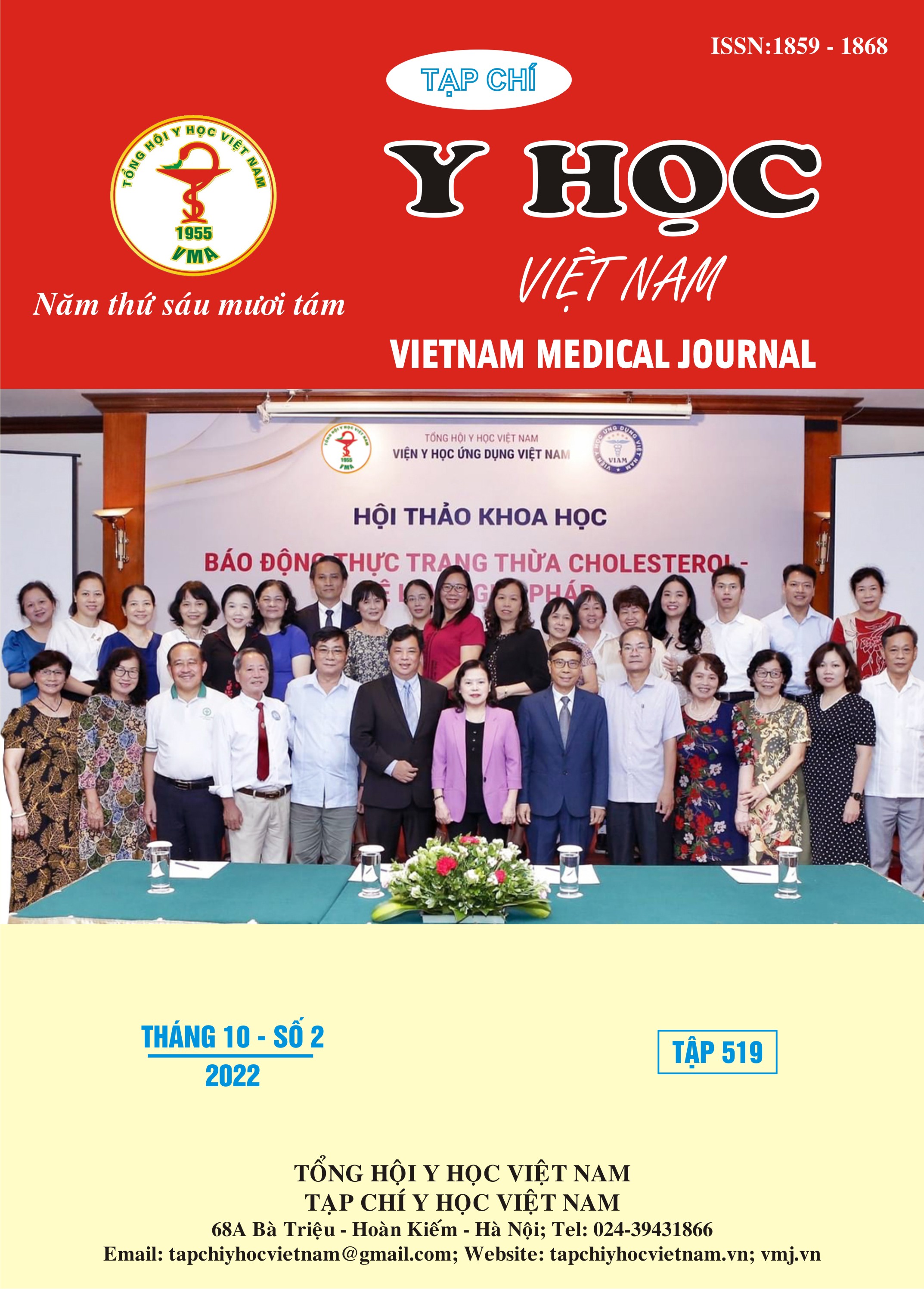SURVEYING SOME EXTRA - ESOPHAGEAL SYMPTOMS IN PATIENS WITH GASTROESOPHAGEAL REFLUX DISEASE
Main Article Content
Abstract
Objectives: To describe some features of extraesophageal symptoms in patients with gastroesophageal reflux disease. Methods: A cross-sectional study was conducted in patients over 18 years old with gastroesophageal reflux disease with extraesophageal symptoms who came to the outpatient clinic and underwent upper gastrointestinal endoscopy at the Gastroenterology - Hepatobiliary Center Bach Mai Hospital from 8/2021 to 6/2022. Gastroesophageal reflux disease was diagnosed based on a GERDQ score ≥ 8 and/or a lesion of reflux esophagitis on endoscopy according to the Los Angeles classification. Extraesophageal symptoms were diagnosed when at least one of the symptoms was chest pain, chronic cough, wheezing, hoarseness, and throat obstruction and other causes were excluded. Results: We recorded 212 patients who were eligible for the study. The three most common extra-esophageal symptoms were cough, sore throat and chest pain with 49,1%, 46,7% and 45,3%, respectively. Two symptoms of hoarseness and wheezing were rarer with the rate of 9,9% and 9,4%, respectively. The proportion of patients with gastroesophageal reflux disease who had reflux esophagitis was 36,3%, levels of Los Angeles A, B, C, D were 87%, 10,4%, 1,3% and 1,3%. The rate of throat obstruction in the group of gastroesophageal reflux disease without esophageal lesions was statistically significantly higher than in the group of gastroesophageal reflux disease with esophagitis. Conclusion: The most common extraesophageal symptoms were dry cough, sore throat and chest pain, two rarer symptoms of hoarseness and wheezing. The rate of throat obstruction in the group with gastroesophageal reflux disease without esophagitis was higher than in the group with esophagitis
Article Details
Keywords
gastroesophageal reflux disease, extraesophageal symptoms
References
2. Durazzo M, Lupi G, Cicerchia F, et al (2020). Extra-Esophageal Presentation of Gastroesophageal Reflux Disease: 2020 Update. Journal of clinical medicine, 9(8):2559.
3. Hom C, Vaezi MF (2013). Extra-esophageal manifestations of gastroesophageal reflux disease: diagnosis and treatment. Drugs, 73(12):1281-1295.
4. Sơn TH (2018). Tần suất và các đặc điểm của triệu chứng ngoài thực quản ở bệnh nhân trào ngược dạ dày - thực quản, Trường Đại học Y Dược TP. Hồ Chí Minh.
5. Min YW, Lim SW, Lee JH, et al (2014). Prevalence of Extraesophageal Symptoms in Patients With Gastroesophageal Reflux Disease: A Multicenter Questionnaire-based Study in Korea. Journal of neurogastroenterology and motility, 20(1):87-93.
6. Yi CH, Liu TT, Chen CL (2012). Atypical symptoms in patients with gastroesophageal reflux disease. Journal of neurogastroenterology and motility, 18(3):278-283.
7. Jaspersen D, Kulig M, Labenz J, et al (2003). Prevalence of extra-oesophageal manifestations in gastro-oesophageal reflux disease: an analysis based on the ProGERD Study. Alimentary pharmacology & therapeutics, 17(12):1515-1520.
8. Naik RD, Vaezi MF (2015). Extra-esophageal gastroesophageal reflux disease and asthma: understanding this interplay. Expert review of gastroenterology & hepatology, 9(7):969-82.
9. Selleslagh M, van Oudenhove L, Pauwels A, Tack J, Rommel N (2014). The complexity of globus: a multidisciplinary perspective. Nature reviews Gastroenterology & hepatology, 11(4):220-33.


